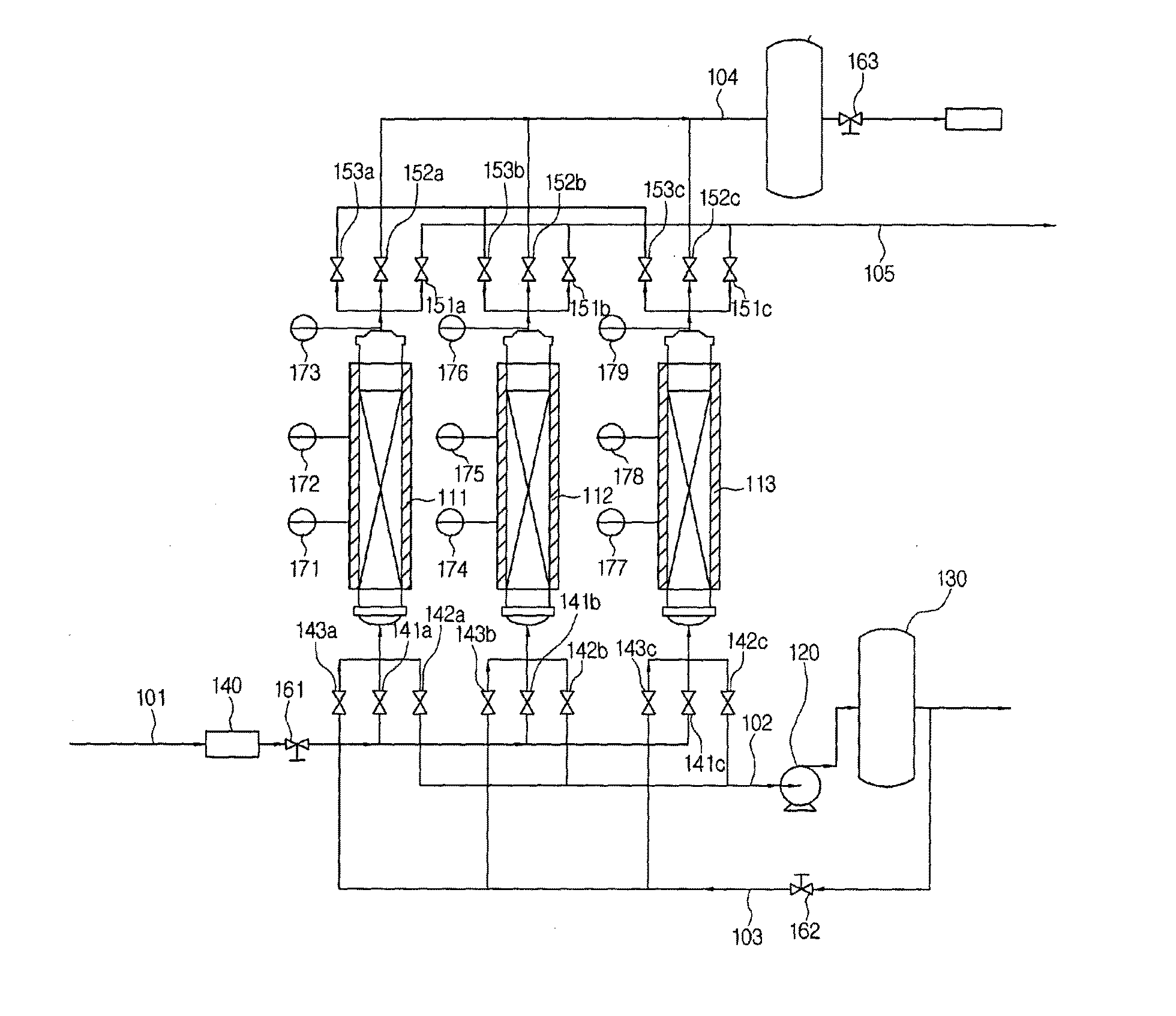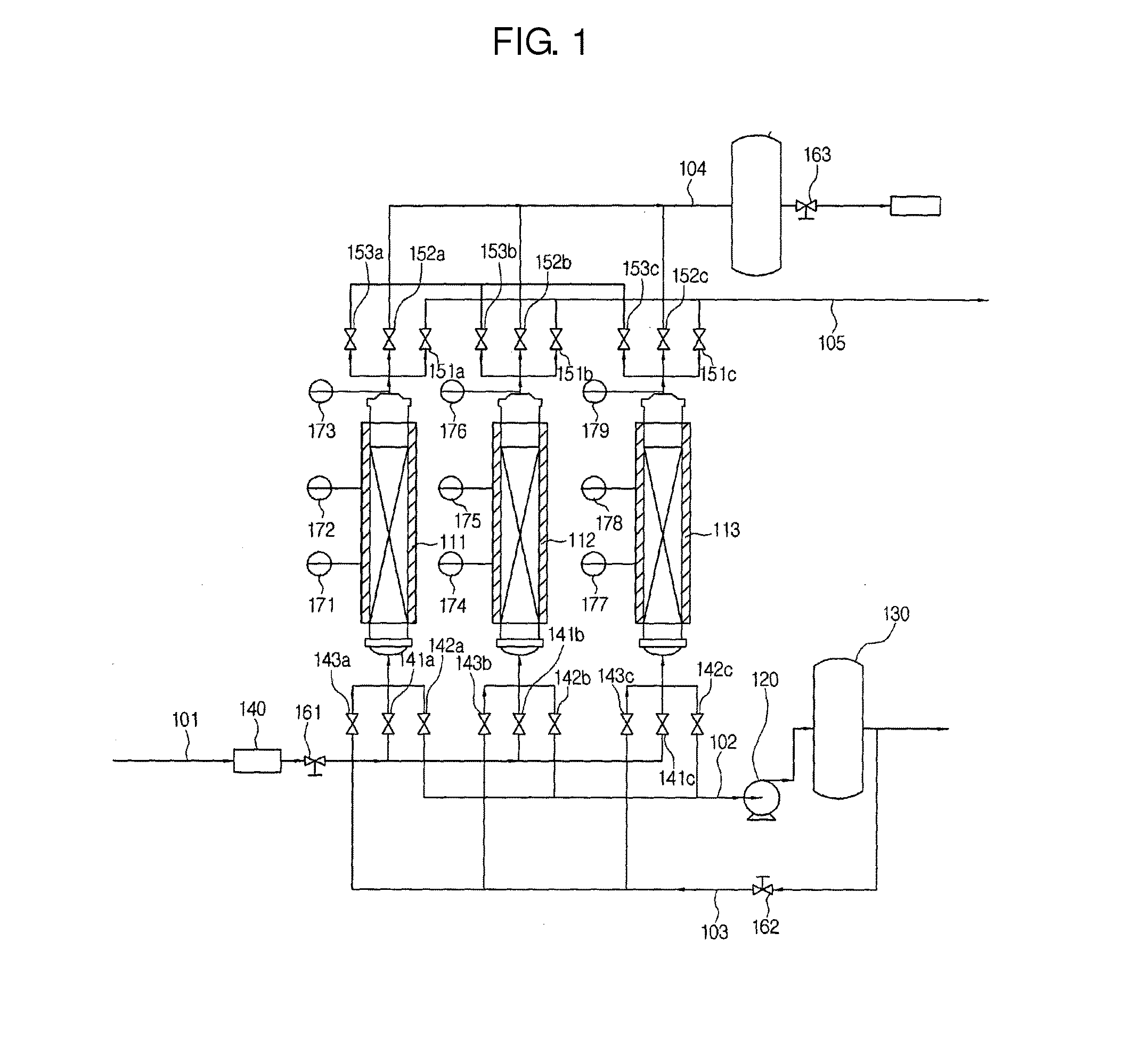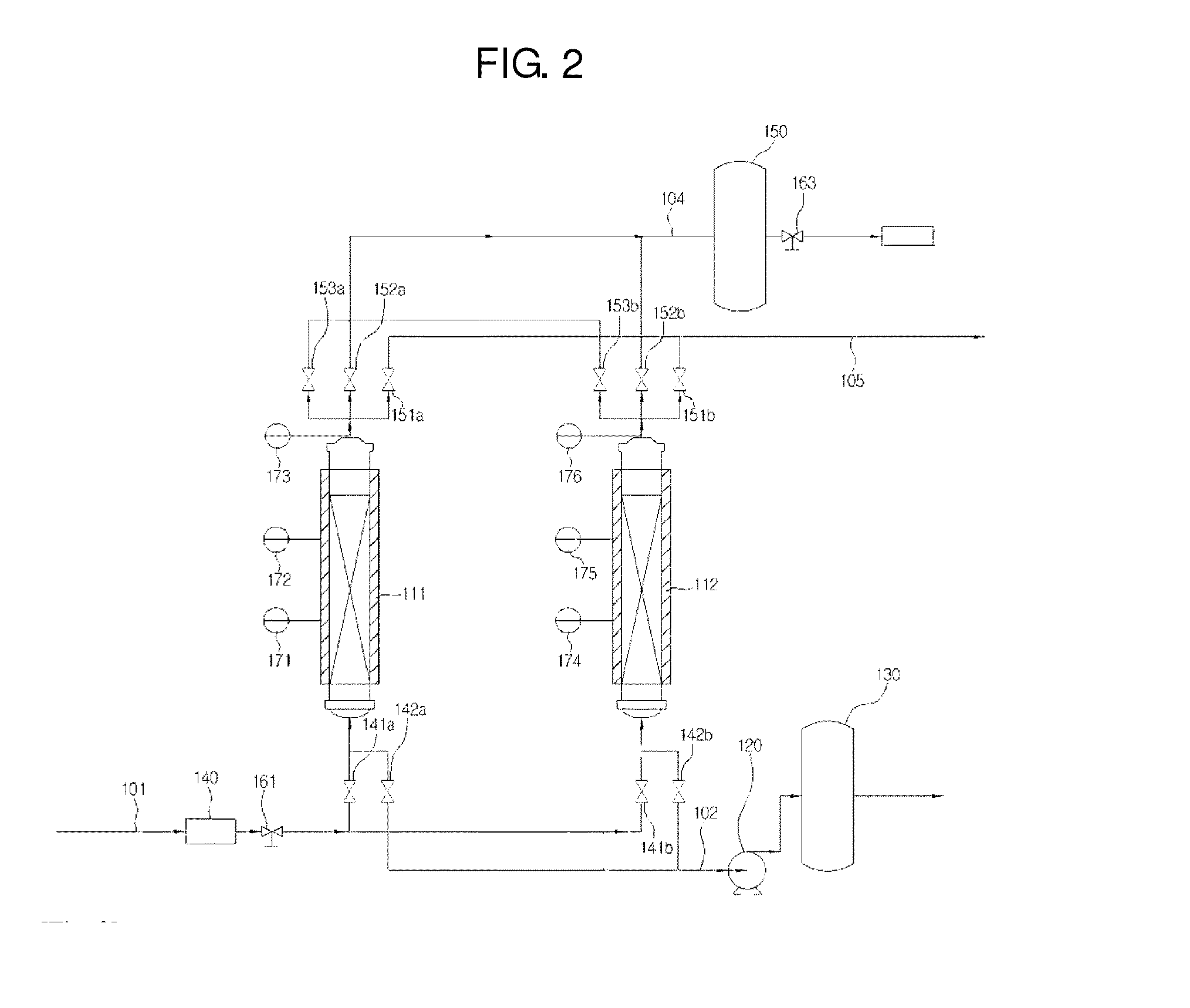Continuous oxygen production method and continuous oxygen adsorption and desorption device using oxygen adsorbing agent
- Summary
- Abstract
- Description
- Claims
- Application Information
AI Technical Summary
Benefits of technology
Problems solved by technology
Method used
Image
Examples
production example 1
Production of Oxygen-Selective Adsorption Agent
[0106]The oxygen-selective adsorption agent was produced by a method of dispersing a mixture of 8 g of BaCO3 and 8 g of Na2CO3 in 200 cc of distilled water and then slowly adding a solution in which magnesium nitrate (Mg(NO3)26H2O, 20 g) is melted in 100 cc of distilled water to the dispersion solution (Ba / Mg molar ratio=0.5). In this case, a solution in which BaCO3 and NaCO3 are melted was maintained at 90° C. Next, the obtained BaMg(CO3)2 particles undergone the filtering and cleaning processes and then were collected and an electron photomicrograph thereof was illustrated in FIG. 7. The oxygen-selective adsorption agent according to the present invention was produced by firing the obtained particles by an electric furnace at a temperature of 900° C. for 10 hours under the oxygen atmosphere.
production example 2
Production of Oxygen-Selective Adsorption Agent
[0107]The oxygen-selective adsorption agent was produced by a method of dispersing a mixture of 8 g of BaCO3 and 4 g of Na2CO3 in 200 cc of distilled water and then slowly adding a solution in which magnesium nitrate (Mg(NO3)26H2O, 10 g) is melted in 100 cc of distilled water to the dispersion solution (Ba / Mg molar ratio=1). In this case, a solution in which BaCO3 and Na2CO3 are melted was maintained at 90° C. Next, the obtained particles undergone the filtering and cleaning processes and then were collected. 5 g of particles obtained by the above process were dispersed in distilled water (100 ml) and then 10 g of magnesium nitrate was melted in the solution and undergone ultrasonic treatment. The Mg(OH)2 was formed by slowly adding ammonia water to the ultrasonic treated solution and was thus coated on the BaMg(CO3)2 and the electron photomicrograph thereof was illustrated in FIG. 2. The oxygen-selective adsorption agent according to t...
production example 3
Forming of Oxygen-Selective Adsorption Agent
[0109]The particles produced in the above production example 2 were dried in a vacuum oven of 120° C. and then were finally fired at 500° C. for 5 hours. Particles having a size of 100 micron or less among the fired particles were acquired by sieving, added with 5 wt % of high-viscosity CMC and 30 cc of water, and then were kneaded. The dough was produced in a pellet form, fired under the oxygen atmosphere of 550° C. to oxidize and remove the CMC, and again fired at 700° C. The finally formed oxygen-selective adsorption agent was produced by performing the above process on the dough and then finally firing the dough at 750° C. for 5 hours under the hydrogen atmosphere.
PUM
| Property | Measurement | Unit |
|---|---|---|
| Temperature | aaaaa | aaaaa |
| Temperature | aaaaa | aaaaa |
| Temperature | aaaaa | aaaaa |
Abstract
Description
Claims
Application Information
 Login to View More
Login to View More - R&D
- Intellectual Property
- Life Sciences
- Materials
- Tech Scout
- Unparalleled Data Quality
- Higher Quality Content
- 60% Fewer Hallucinations
Browse by: Latest US Patents, China's latest patents, Technical Efficacy Thesaurus, Application Domain, Technology Topic, Popular Technical Reports.
© 2025 PatSnap. All rights reserved.Legal|Privacy policy|Modern Slavery Act Transparency Statement|Sitemap|About US| Contact US: help@patsnap.com



